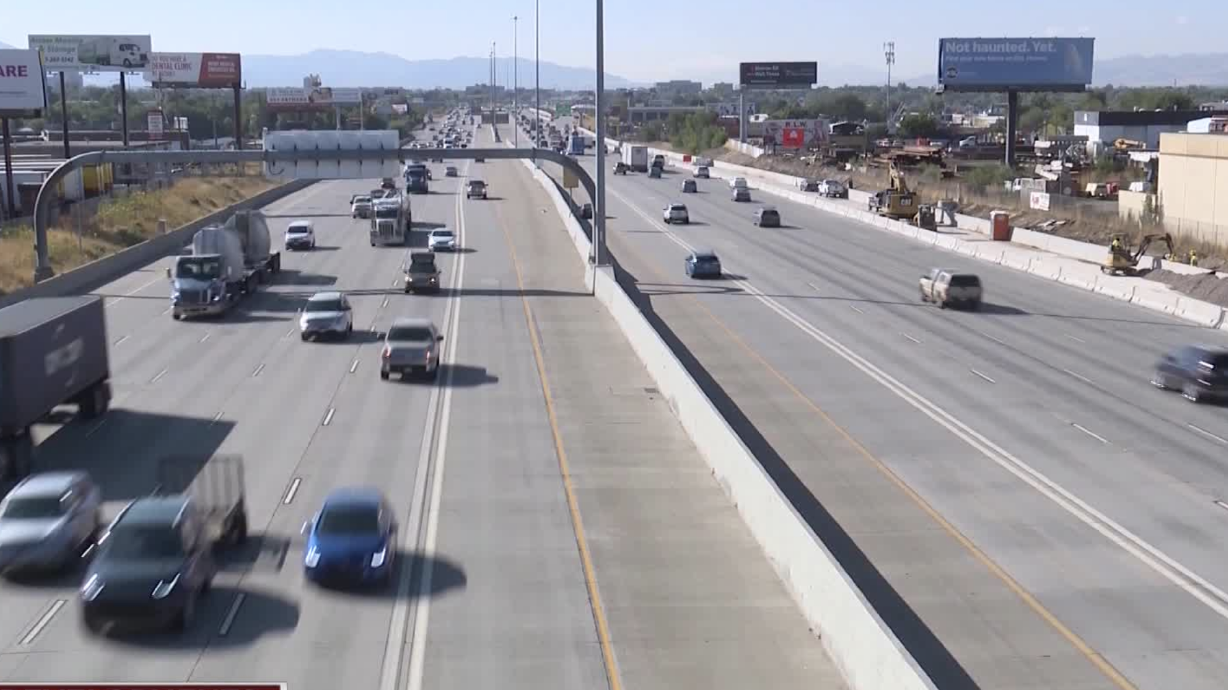Estimated read time: 3-4 minutes
This archived news story is available only for your personal, non-commercial use. Information in the story may be outdated or superseded by additional information. Reading or replaying the story in its archived form does not constitute a republication of the story.
SALT LAKE CITY — One of the Utah Department of Transportation's long-term goals is working toward having real-time situational awareness of the state's roads.
Today, they might be getting one step closer to reaching that goal thanks to a new pilot partnership with Blyncsy, a Salt Lake City-based software company that focuses on solving transportation issues.
The company has developed an artificial intelligence tool that collects data on road conditions using crowd-sourced video collection. The system, named Payver, can detect fading paint lines, potholes, fallen signs and more — all from a single image.
Crews can then access the system and begin fixing the problems on the roadway.
To start, the pilot program will be in the Salt Lake Valley for six months and focus on paint lines, but it could expand if UDOT likes what the tool offers.
The U.S. Department of Transportation estimates that dire repairs are needed on two-thirds of roads, but there is a multibillion-dollar backlog for repairs on existing roads. With the help of Payver, Mark Pittman, founder and CEO of Blyncsy, hopes some of these repairs can get done in a cost-effective and timely manner.
During the pilot program, Payver will assess more than 350 miles of road in the Salt Lake Valley. The software relies on dash camera footage or video uploads through its app to collect data and identify potential safety threats on the roadway.
The program could help the department save money as well, since it will be doing all the work to pinpoint roadway problems and save maintenance workers' time by allowing them to be able to do repairs, rather than spending half their time finding problems in the first place.
"Our civil servants are kind of taxed — they get fewer resources every year, there's fewer of them, and we have more infrastructure, more people, and they're trying to deal with that dynamic and we're trying to make their job easier," Pittman said.

Finding a better solution to upgrading infrastructure isn't just important for drivers today — it's needed for the drivers of tomorrow.
Self-driving vehicles are here and some industry experts predict they could be a norm in the coming years. However, the roads aren't yet ready for these cars.
"If we want to be in this autonomous environment, we want to be in this intelligent environment, we want to make things more efficient, this is the bedrock that's necessary to make it possible," explained Pittman.
While no one can predict the future and predict when exactly self-driving cars will become a norm in daily life, getting the roads ready is just one part of the process.
"By using data and artificial intelligence, we can make our roads smarter, safer, and support the rollout of autonomous vehicles," Pittman said.
The system can also help level the playing field for infrastructural problems, he added. For example, some neighborhoods might get a pothole fixed quicker since people there know how to report it. For lower-income neighborhoods, residents might not always have the resources to report road damage.
"We can collect all of the images equitably, we can determine through machine learning and through algorithms for the prioritization system in a more equitable way," Pittman explained.
"We're piloting this technology as we look for more data-driven ways to optimize our operations and increase safety on our roadways," said UDOT Director of Traffic and Safety Rob Miles. "The condition of our striping and physical infrastructure is a key element in delivering the best driving experience for our state."
"We definitely want to see how it performs and how it works within our system. We're very innovative and we're interested in looking at innovation to make us as efficient and responsive as we can be," said John Gleason, spokesman for UDOT.









